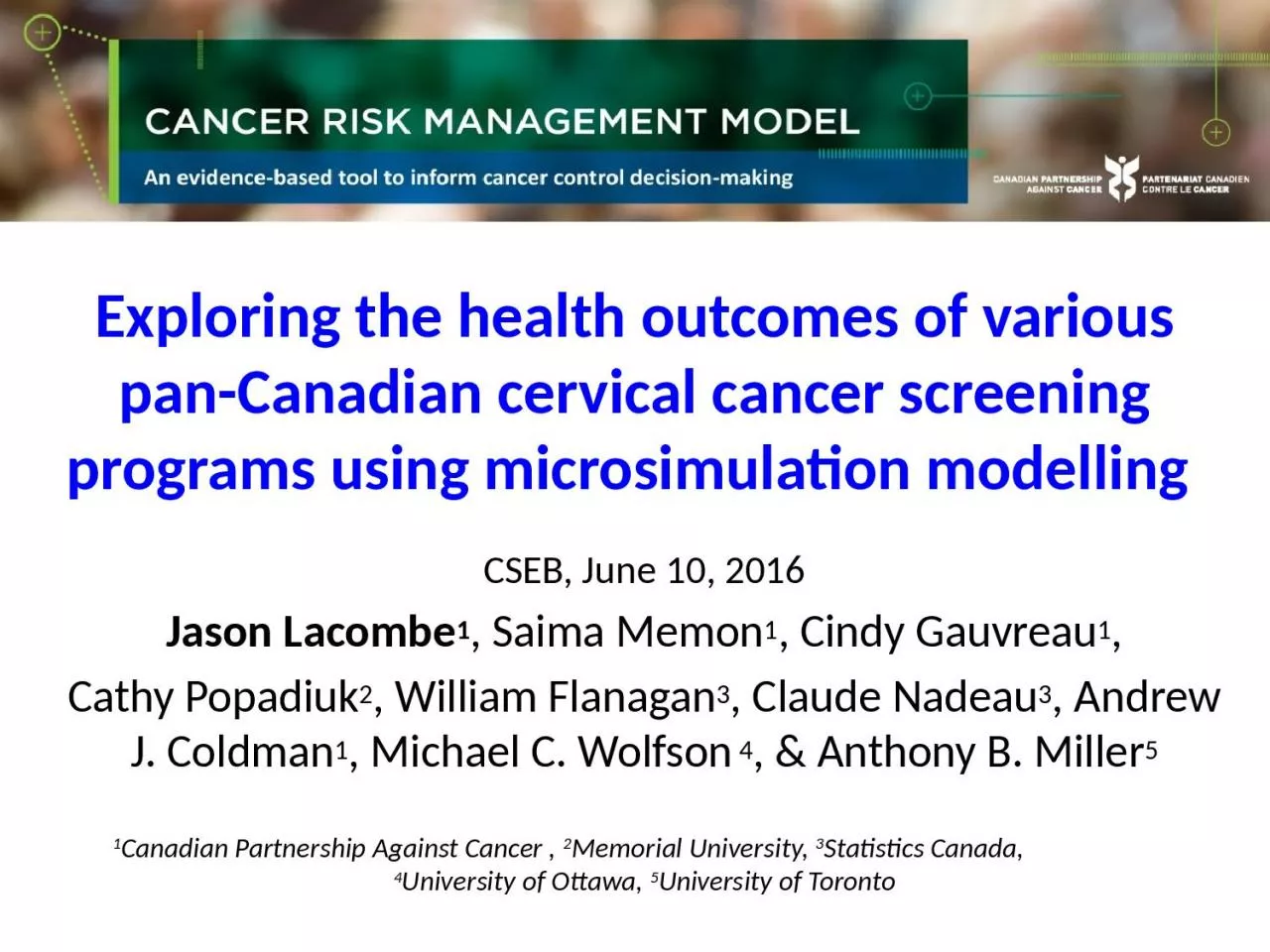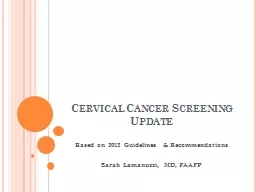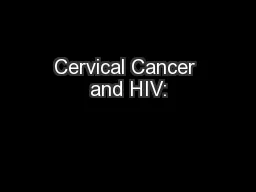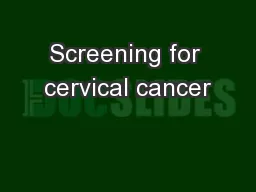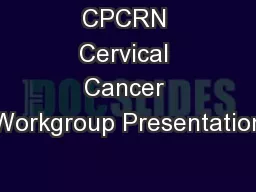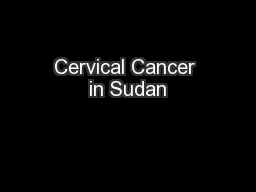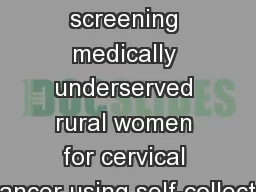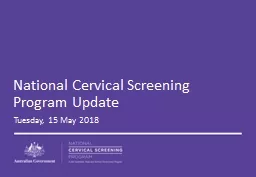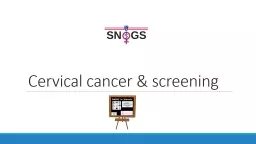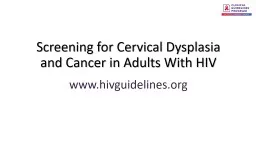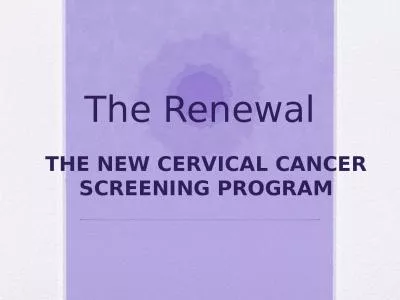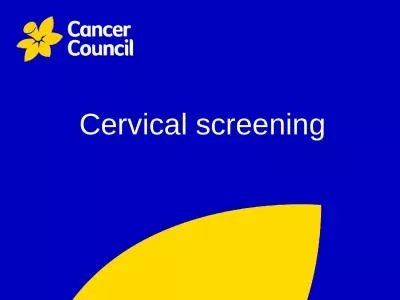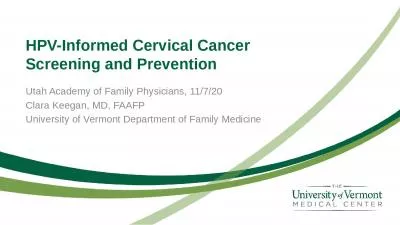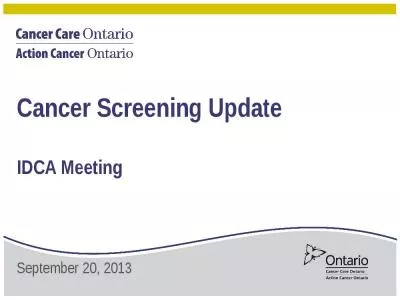PPT-Exploring the health outcomes of various pan-Canadian cervical cancer screening programs
Author : udeline | Published Date : 2024-01-13
CSEB June 10 2016 Jason Lacombe 1 Saima Memon 1 Cindy Gauvreau 1 Cathy Popadiuk 2 William Flanagan 3 Claude Nadeau 3 Andrew J Coldman 1 Michael C Wolfson
Presentation Embed Code
Download Presentation
Download Presentation The PPT/PDF document "Exploring the health outcomes of various..." is the property of its rightful owner. Permission is granted to download and print the materials on this website for personal, non-commercial use only, and to display it on your personal computer provided you do not modify the materials and that you retain all copyright notices contained in the materials. By downloading content from our website, you accept the terms of this agreement.
Exploring the health outcomes of various pan-Canadian cervical cancer screening programs: Transcript
Download Rules Of Document
"Exploring the health outcomes of various pan-Canadian cervical cancer screening programs"The content belongs to its owner. You may download and print it for personal use, without modification, and keep all copyright notices. By downloading, you agree to these terms.
Related Documents

